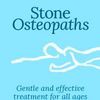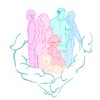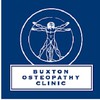
Osteopathy is an approach to healthcare that integrates manual therapy with education, advice and the development of a therapeutic relationship which allows time for the exploration of the broader aspects of a person's health and well-being. Osteopaths deal with people in acute and chronic pain. This inevitably entails looking at a person's health in its broadest sense.
How did this happen? How long will it take to go? What can you do about it? What can I do about it? This last question is important because research shows that the better you understand your pain the better placed you are to take control over it. My job is to not only provide the "hands-on" examination and treatment to help with the initial firefighting of your problem but to help you to get to know pain, pun very much intended.
How did this happen? How long will it take to go? What can you do about it? What can I do about it? This last question is important because research shows that the better you understand your pain the better placed you are to take control over it. My job is to not only provide the "hands-on" examination and treatment to help with the initial firefighting of your problem but to help you to get to know pain, pun very much intended.
Services
I will then want to carry out an examination to check out the functioning of your body in relation to the area you are experiencing symptoms. It is sometimes necessary for patients to remove some clothing to be adequately examined so for those less comfortable with this it advisable to wear loose clothes such as a t shirt and tracksuit bottoms or shorts.
This post is aimed at those people who have heard about the World Health Organisation advice to take 150 min per week of moderate aerobic exercise but are wondering how to fit that in. Time constraints are one of the reasons for the popularity of high intensity interval training, or HIIT, that enables people to halve the amount of aerobic activity they need in a week.





